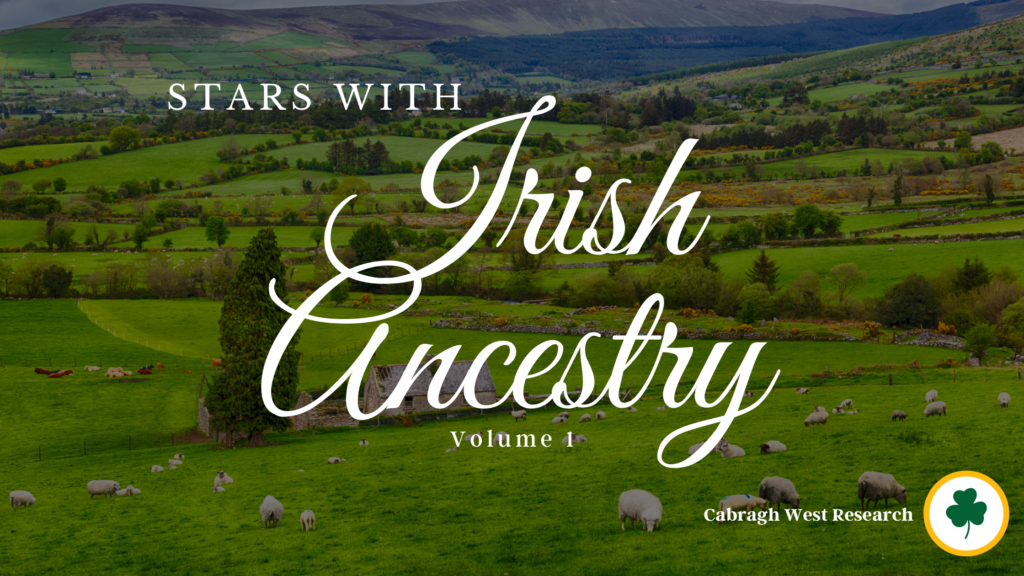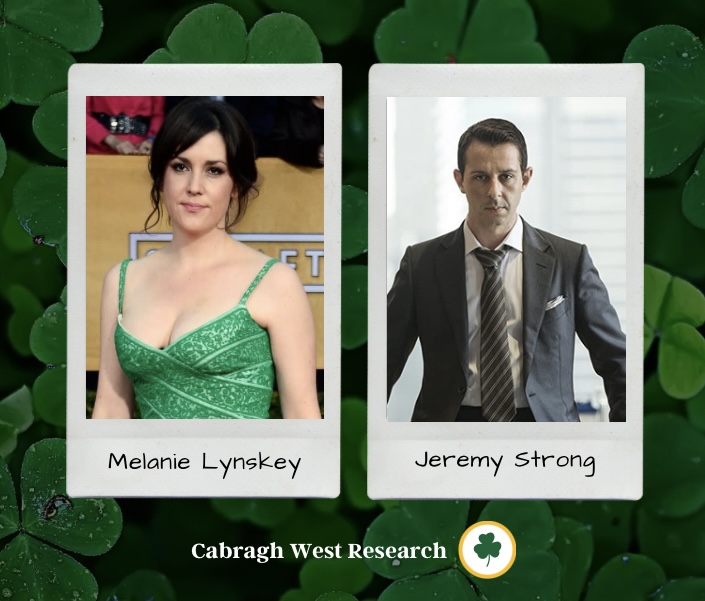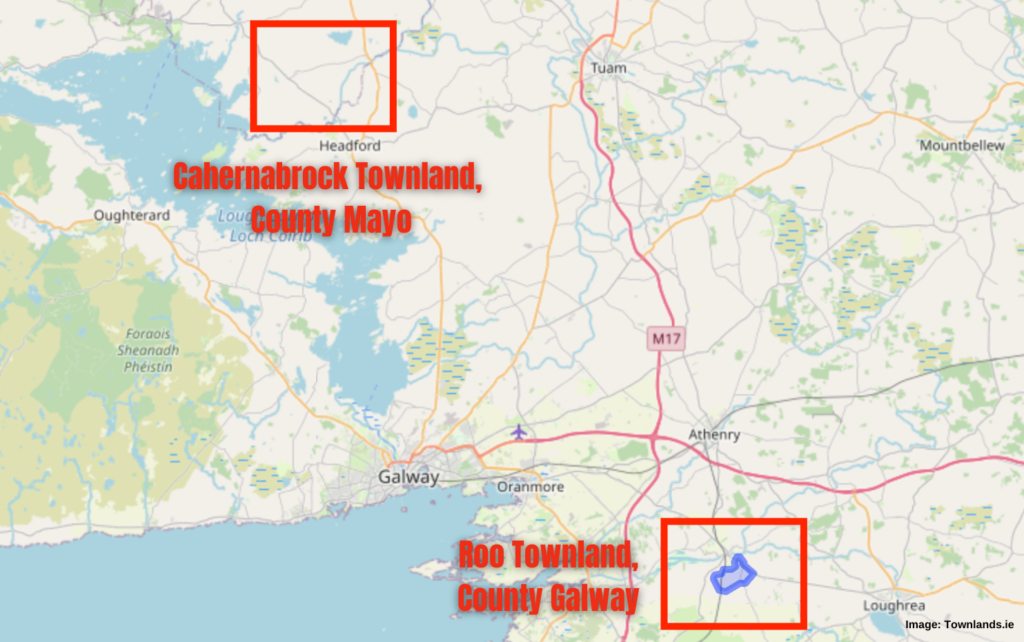
Three of the most entertaining prestige television shows in the past few years have been “Succession”, “Yellowjackets”, and “The Last of Us”, and new seasons of “Succession” and “Yellowjackets” premiere this evening in the United States. At least two of the stars of these shows, Melanie Lynskey (“Yellowjackets” and “The Last of Us”) and Jeremy Strong (“Succession”) have Irish immigrant ancestors and the two families lived surprisingly near each other! Read on for a recap of the research we’ve done proving these connections to Ireland.

Melanie Lynskey
Melanie Lynskey was born and raised in New Zealand. Her great-grandfather, Patrick Edward Lynskey (1874-1952) was born in Kaiapoi, New Zealand, to Irish immigrants named Michael Lynskey (1837-1917), a ploughman, and Ellen Moran (1840-1908). Michael and Ellen were in their early 20s when they sailed to New Zealand by way of South Africa, aboard the Chrysolite in 1861. Accompanying them was their infant daughter, Mary, who was only about two months old.
Michael and Ellen had married in 1859 in Kilmaine Roman Catholic Parish, County Mayo, though Michael was from neighboring Shrule Parish. Marriages commonly occurred in the bride’s home parish. The young family lived in Cahernabrock Townland (in Irish Cathair na mBroc), in Shrule Parish, when Mary was born in February of 1861. This townland is almost on the border with County Galway and lies about halfway between Tuam and Cong.
In the mid-nineteenth century, households headed by a Lynskey were concentrated in Counties Mayo and Galway, according to a property valuation of Ireland called Griffith’s Primary Valuation. The surname in Irish is Ó Loinscigh or Ó Loingsigh, a derivative of Lynch.

Jeremy Strong
Jeremy Strong grew up in Massachusetts. His maternal ancestors descend from Burke, Haines, Martin, McCormick, McIntyre, and McManamon families who all hail from Ireland. The McIntyres and McManamons first briefly lived in Derbyshire and Lancashire, England, before migrating to New York, then to Cleveland, Ohio.
Jeremy’s three times great grandparents, Owen Haines (also sometimes spelled Hines and Hynes) and Bridget Burke came to Maine from Roo Townland in Killora Civil Parish, County Galway, between 1859 and 1863. In Irish, Roo Townland is called An Rú, or Rua, which means “red”. Owen’s and Bridget’s first child, Martin, was born there in 1859 and Jeremy’s direct ancestor, Bartholomew (also called Bartley and Bartlett) was born in Portland, Maine, in 1863.

Incredibly, Jeremy’s Burke and Haines ancestors lived only about an hour (by today’s car driving, on paved roads) southeast of Melanie’s Lynskey ancestors!
